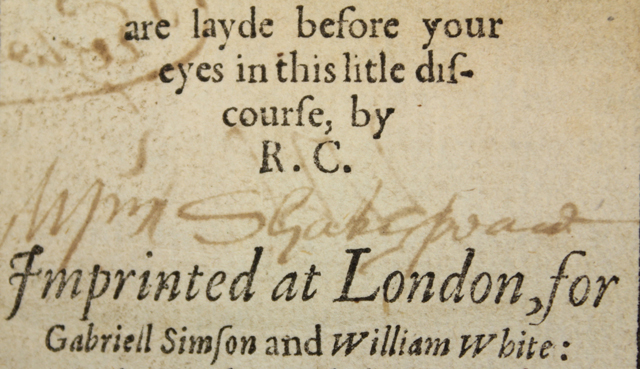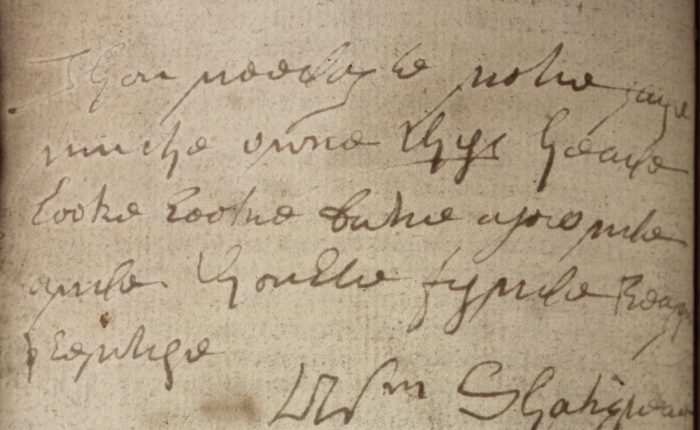A Shakespearean Forgery
Roger Cotton
A Direction to the Waters of Lyfe
London, 1590
Hoping to impress his father, William Henry Ireland (1775–1835) perpetrated one of the greatest literary hoaxes in history when he forged several documents purported to be written in the hand of William Shakespeare. Besides manuscripts, Ireland also forged Shakespeare’s handwriting in dozens of early modern printed books, making up the so-called “Shakespeare Library.” The Clark owns one of the forged books, which contains several of Shakespeare’s “signatures,” two manuscript poems, and some marginalia. Ireland’s fake handwriting—a poor imitation of English secretary script—was one of the telltale signs of the forgery: anyone trained to read the hand knows that Ireland’s manuscript notes are completely illegible. Perhaps anticipating such a problem, Ireland inserted slips of paper with transcriptions of the marginalia, so that contemporaries could read “Shakespeare’s” notes and poems. This copy bears business records and doodles purportedly in Shakespeare’s hand, with Ireland’s transcription on the facing leaf: “Toe Greene 14 [/] Mye Masterre Armynne hose [/] Toe Masterre Greeggs 42.”




